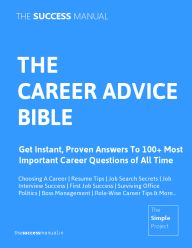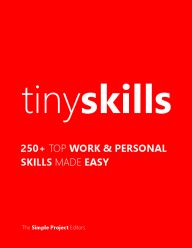On June 22, 2010 By bookguide Topic: Greatbooks, Book summary
Jeff Howe, a writer at influential technology magazine Wired has written the essential guide to using people power on the net to create a community and do great things on a regular basis that people will like.
Highlight from the book:
Great look at a different way of getting a project done: not outsourcing it to a person, but developing a system where thousands of people can contribute a little bit.
Crowdsourcing has the capacity to form a sort of perfect meritocracy. The quality of work takes precedence over pedigree, race, gender, age and qualification.
Crowdsourcing has revealed that, contrary to conventional wisdom, humans do not always behave in predictably self-interested patterns.
People are driven to contribute for a complex web of motivations, including a desire to create something from which the larger community would benefit as well as the sheer joy of practicing a craft at which they excel. People are inspired to contribute to crowdsourcing endeavors for similar motivations, though financial incentives also play a role, especially when the contributors hail from developing countries.
Get enough people together - be it in a bar or a chat room - and a mysterious dynamic kicks in. People either accentuate their differences and polarize into opposing camps, or they downplay their differences alogether in order to reach a consensus. Both phenmoena have the same net effect: The diversity within the crowd is diminished.
People will work late into the night on one creative endeavor or another in the hope that their community - be it fellow designers, scientists, or computer hackers - acknowledge their contribution in the form of kudos and, just maybe, some measure of fame.
Case studies
Ken Thompson made Unix out of small, discrete programs meant to do one thing but to do it well. Such an architecture would eventually allow hundreds of programmers to work together in a totally decentralized fashion - in much the same way thousands of contributors work together today in a decentralized fashion to form a single reference work, Wikipedia. Breaking labor into little units, or modules, is one of the hallmarks of crowdsourcing.
Threadless (Community driven T-shirt portal) isn't really in the T-shirt business. It sells community. All products sold by Threadless are inspected and approved by user consensus before any larger investment is made into a new product. Users also have the ability to check the 'I'd buy it!' box next to the scale.- a strategy called "collective customer commitment". The dual benefits of giving your customers a vote is you have their commitment and the company knows how much demand exists for every shirt it produces. Small wonder then that every shirt sells out.
Dell's IdeaStorm employs another crucial element of crowdsourcing - the crowd's collective opinion.
Microsoft, Eli Lilly, Goldman Sachs, and Deustche Bank have all used prediction markets to help determine corporate strategy.
iStocker (Stock photography portal) - developed a credit system - a user could download one image for every image of theirs that had been downloaded by someone else.
AssignmentZero's community of journalists ensured that the interviewer was well informed, asked challenging questions, and managed to elicit interesting commentary.
Linda Parker ("Online communities editor", for the Cincinati Post) - "It used to read, 'Be a Citizen Journalist' and no one ever clicked on it, then we said, "Tell us your story" and still nothing. For some reason, 'Get Published' were the magic words."
Von Hippel (Head of the Innovation and Entrepreneurship Group at MIT's Sloan School of Management) demonstrated that in fields as wide ranging as scientific instruments and mountain bikes and computer chips, the task of innovation was passing from the manufacturer to the user, who has both a greater need and a greater ability to improve a product's performance. Companies that embraced this change entered into a creative relationship with their customers, even going so far as to provide them with tools to help design the end products.
Hawthorne Heights (Indie Band) - Each musician would spend four to five hours online everyday, engaging their fans in banter and generally making themselves accessible. The fans loved it! The fans couldn't believe they were actually getting a response, they had a fan for life because of that! By frequently updating their blog and swapping in new songs on their MySpace profile, Hawthorne Heights was able to give fans a reason to return.
Companies like InnoCentive and iStock are meritocracies; all that matters is the final product. This is one of its greatest strengths.
The untrained eye is also untainted. Their (InnoCentive's) greatest asset is a fresh pair of eyes, which is simply a restatement of the truism that with many eyes, all flaws become evident, and easily corrected.
Two shared attributes among almost all crowdsourcing projects:
- Participants are not primarily motivated by Money
- They are donating their leisure hours to the cause.
In this environment, the "professional" has never been more widely distrusted and the "amateur" more cheerfully embraced.
Crowdsourcing has no more regard for professional qualifications than it has for nationality.
Paid employees can be told what to do, online communities do what they want - Its often a price well worth paying.
Motivation is of 2 types
- Extrinsic - The Carrot (Financial Reward) and The Stick (A scolding from your boss)
- Intrinsic - goals such as creative fulfillment, a belief in the project, the sense of community obligation, the opportunity to enhance one's reputation in the community.
What makes the online community a more efficient workforce than one managed by a firm? The short answer is that communities are better at both identifying talented people and evaluating their output.
The right person with the right combination of talent, willingness, and a few spare hours will take on the job. (Context - Wikipedia - who would write each of the 2.2 million entries on the portal)
TopCoder - unique model for community based software developement. They broke tasks down into the smallest possible discrete parts, the smaller the block, the more ways they could use it. A Job has to conform to a given individual's "spare cycle", or excess capacity - The hours between work and sleep.
- The Diversity Trumps Ability Theorem - Given certain conditions, a randomly selected collection of problem solvers outperforms a collection of the best individual problem solvers.
The types of crowdsourcing that traffic in collective intelligence take three primary forms.
- The first category is the prediction market, or the information market, in which investors purchase "futures" pegged to some expected outcome, such as the winner of the Oscar for Best Picture, or the Presidential election.
- The second form is the problem solving, or crowdcasting, network, in which someone with a problem broadcasts it to a large, undefined network of potential solvers.
- The third category is the "idea jam" which is essentially just a massive online brainstorming session that takes place over the course of weeks instead of hours.
There are other conditions that must be met for diversity to trump ability
- First, it must be a pickle of a problem
- Secondly, the crowd must have some qualifications to solve the problem at hand. There must be a method of aggregating and processing each individual's contribution.
- Finally, participants must be drawn from a large enough pool to guarantee a diverse array of approaches, and the ability to express their individuality - Their "local knowledge" - must not be impaired.
Sturgeon's Law - 90% of everything is crap.
The 1:10:89 Rule - For every given 100 people, 1 will actually create something, 10 will vote on what he created and the remaining 89% will merely consume.
Crowdfunding - Directly connecting the people who have money to the people who need it.
Matt and Jessica Flannery, founders of Kiva.org (a micro lending site)
Who better to decide what should be created than the person who will ultimately consume the product?
Ten Rules of Crowdsourcing
- Pick the Right Model (successful crowdsourcing projects use a combination of these approaches)
- Collective intelligence or crowd wisdom
- Crowd Creation
- Crowd Voting
- Crowd Funding
- Pick the Right Crowd
- Offer the right incentives
Attracting a crowd is much easier than keeping them. The most important component to a successful crowdsourcing effort is a vibrant, committed community and understanding what motivates people to contribute in the first place. People ned to feel rewarded for their efforts.
- Keep the pink slips in the drawer.
An editor's role will be to lead a conversation, not to deliver a monologue.
- The dumbness of crowds, or the Benevolent Dictator Principle
People might be enthusiastic and capable of some level of self organization but they also require directions and guidance and someone to answer their questions. Most successful crowdsourcing efforts are products of a robust collaboration between the crowd and the individuals guiding them. These people focussed the collective and corrected for some of the common hive mind failure modes.
- Keep it simple and break it down
Modules that can be independently produced before they are assembled into a whole.
- Remember Sturgeon's Law
- Real talent will remain a rare commodity.
- Remember the 10%, the Antidote to Sturgeon's law.
If you find yourself inundated with submissions, don't bother sifting through them yourself. Allowing the crowd to find the best and brightest diamonds in the rough.
- The community is always right
Communities need a decider (as well as a helping hand, a shoulder to cry on, and occasional dean of discipline. You can try to guide the community, but ultimately, wind up following them.
- Ask not what the crowd can do for you, but what you can do for the crowd.
Crowdsourcing works best when an individual or company gives the crowd something it wants. People are drawn to participate because some psychological, social or emotional need is being met. And the need isn't met, they don't participate.
[From the Great Books Series. Also see The Success Manual - Encyclopedia of Advice, which contains summaries of 100+ Most useful books.]

